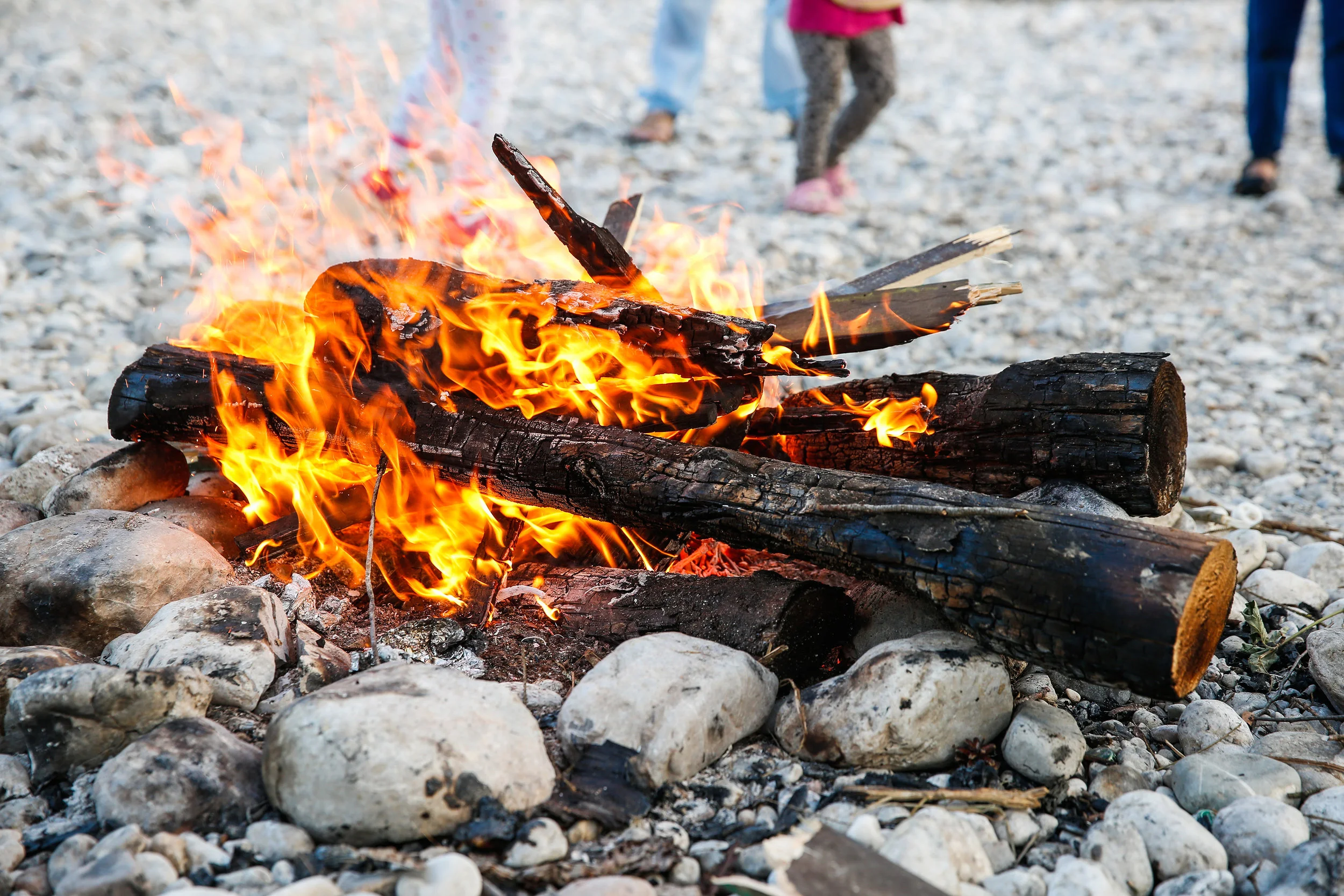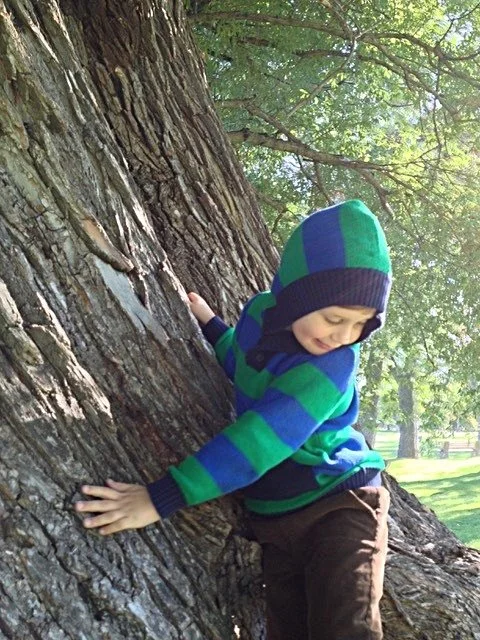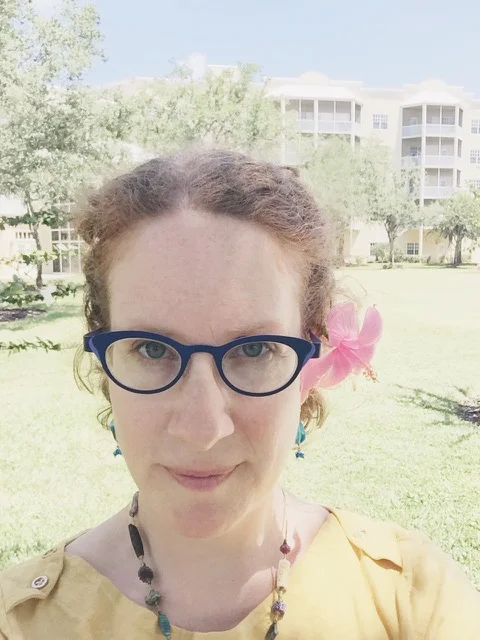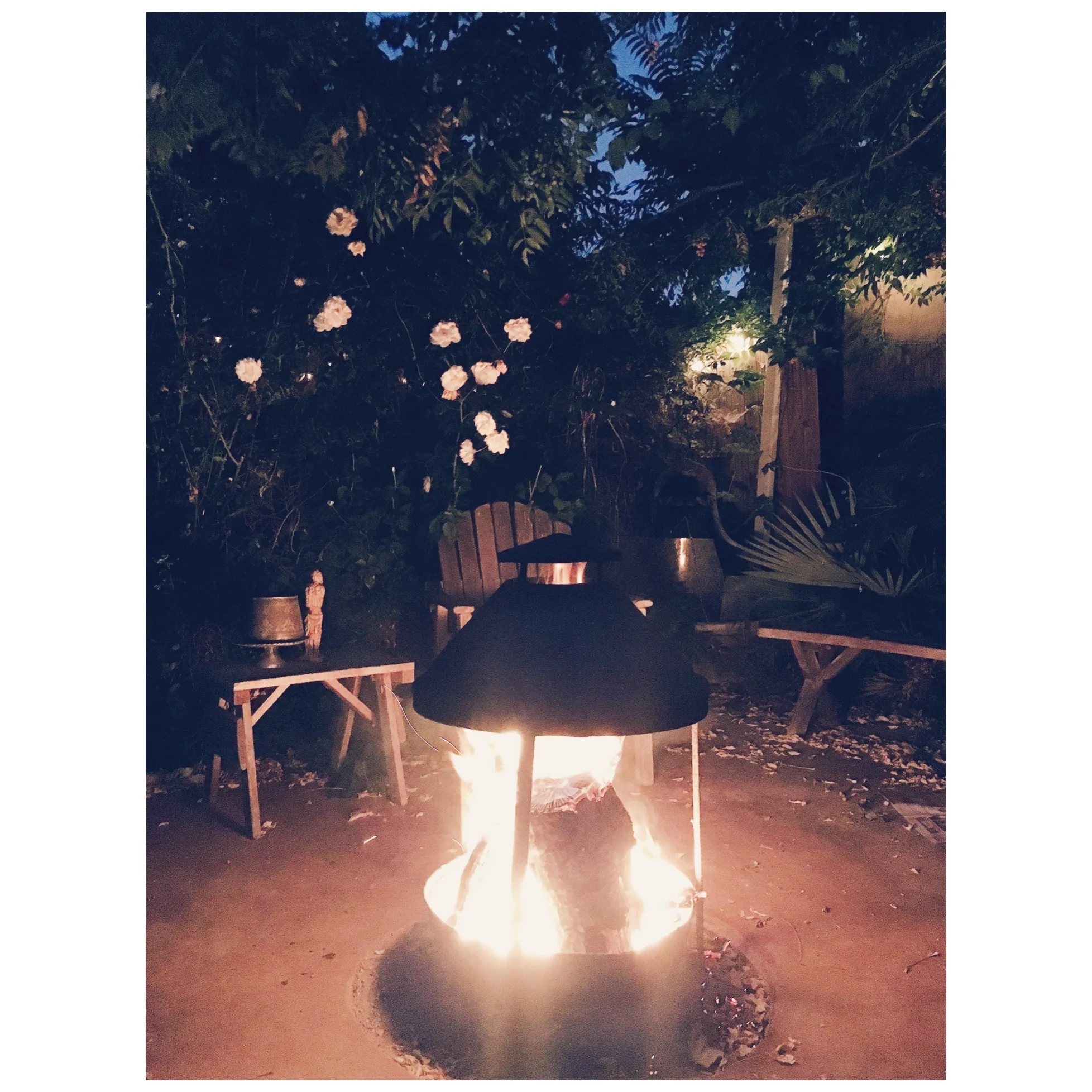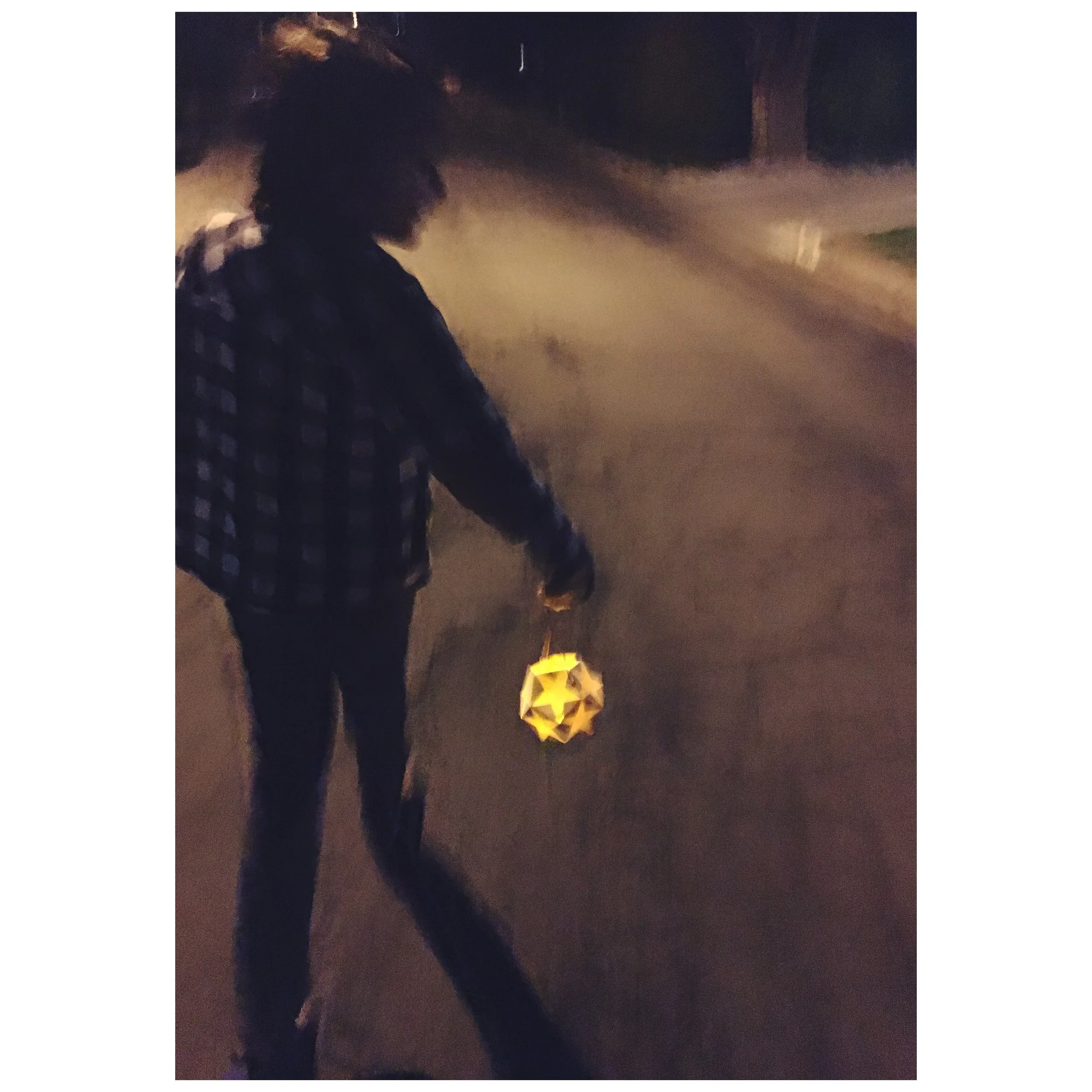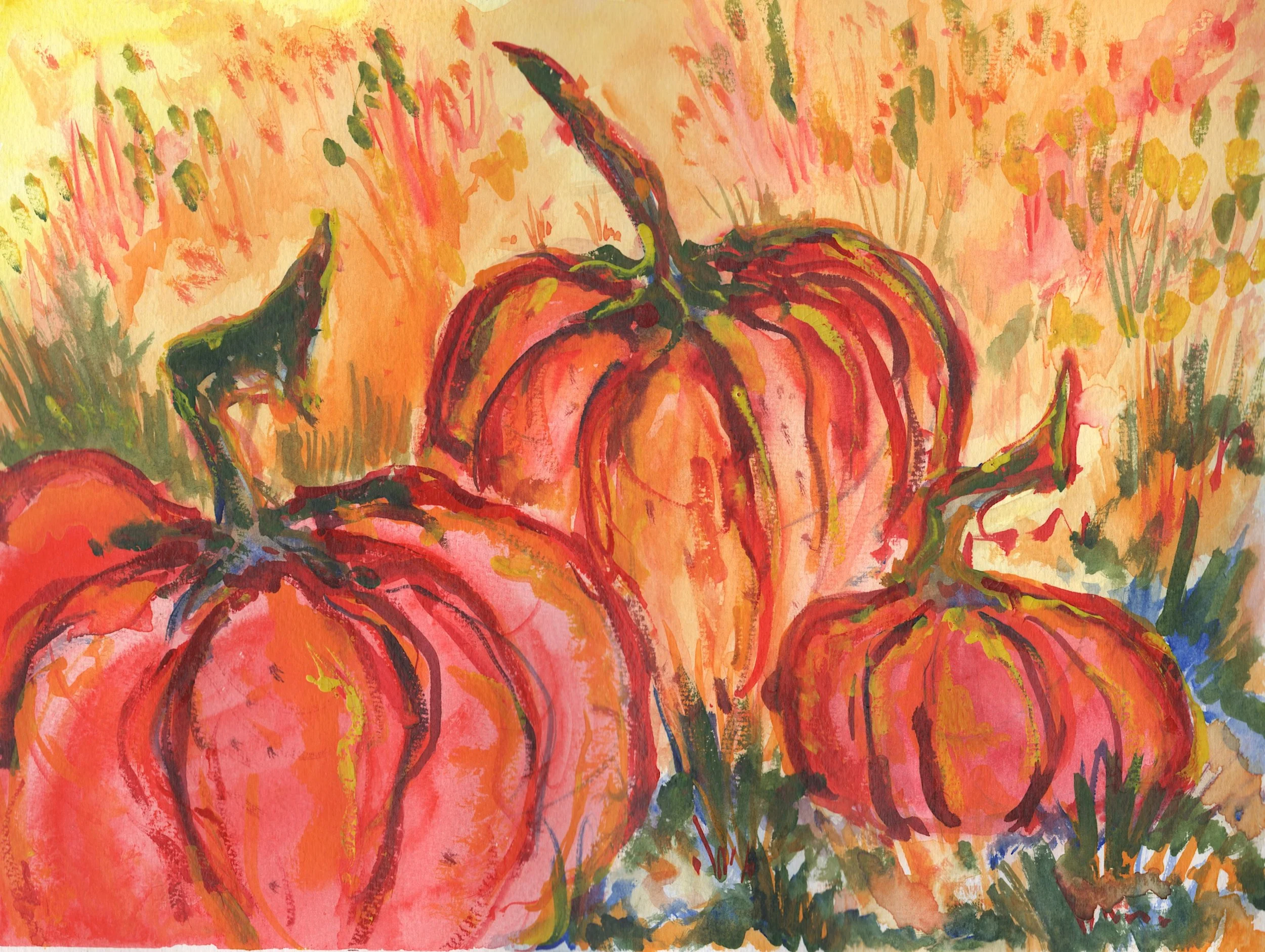
Waldorfish Blog
Pedagogical Stories: Start with the Stories in Your Bones
I come from a family of storytellers, though if you asked them, they might not own it.
The stories shared around my grandmother’s living room, in the front seat of my mother’s car, at restaurant dinners with my dad, these stories have shaped my identity and my sense of belonging. The stories don’t always have a clear point or moral. Sometimes, they don’t even have a plot. Each one, though, for good or bad, has been deeply instructive for me as a growing and developing human being — and don’t forget, we are growing and changing for the entirety of our time on earth!
All of these stories, if told when there was a desire to teach me something, or to pass on a particular piece of wisdom, could have been pedagogical stories. These stories, which my family members knew as they knew their own breath, have become part of my own legacy of stories, and are woven into my very bones and being.
Prefer to listen to an audio recording of this post? You can do that, here:
When you begin to delve into the deep soil of waldorf pedagogical storytelling, it can be overwhelming.
My advice, is to start with what you know in your bones. Start with your own life. Your life is a source of stories that are both unique and universal. They are unique, in that they are your own, and no other human being in the course of history has your biography or destiny. They are universal, in that we, as human beings on a path of development towards our fullest expression of selfhood, take a common journey between birth and death. This journey may lead us into dark forests or underground caves, and while we may never find ourselves living in a palace at the end of it, the union of “[our] avocation and [our] vocation, as [our] two eyes make one in sight,” as Robert Frost wrote, is the real happily ever after that fairytales offer.
What stories are within you already?
To start telling pedagogical stories, you must listen.
Listen to your child, or to the children around you, and try to understand what they’re going through. Hear their concerns, their desires, their clamor for attention. Then, respond with something from your own life. In the US, it’s common for my friends and me to bond by sharing stories with one another — “Oh, that happened to you? Here’s what happened to me that was similar…” — not as a way of one-upping each other, but as a way of saying, “I’ve been there, too.” You can do that same thing for your child. It can be hard, even painful, to excavate some of the darker places in our memories. Don’t feel you have to bare your soul right away. It wouldn’t be appropriate in most cases, and it’s not going to meet the child’s needs.
Here are a couple of concrete examples: your child had a rough day at school. She was trying to help a friend who was upset, and the teacher noticed her talking and called her out in front of the rest of the class. When she tells you this, what do you want her to know? Perhaps you want her to know that you understand how important it is to help someone else, even when it could get you into trouble, so you share the story of a time you did that. Maybe you want her to gain the courage to talk to the teacher tomorrow about what happened. You could share a story about a time you had to be brave.
There’s no need to tell your child what you want them to get out of the story.
Rather, you can ask them about it — What do you think I learned from that? How do you think my mom felt when she heard that? Try adding sensory details to your story — what did it look like, sound like, smell like, in your 3rd grade classroom? Paint a picture with your words, and then let it dissolve. Let your child decide what to do with the story. She will take the action she’s ready to take.
Perhaps you notice that your children have been leaving their toys or sports equipment in the yard where it could be damaged by the rain, or by a pet, or could even be stolen. You might remember how you left your tennis racquet on the back steps and your dad stepped on it and bent the frame. He was okay, and you were kind of able to straighten out the racquet, but it was never quite the same after that.
Now, this is the hard part for me, when there is a specific behavior I want to see change: resist the urge to say, “And that, dear children, is why you must go pick up all the baseball bats, soccer balls, and rhythmic gymnastic apparatus from the yard RIGHT NOW!”
Rather, tell the story during a time that isn’t cleanup time, and talk about the story with your children without trying to lead them to a particular behavior. Then, when it’s time to clean up the next day, or the next week, you might say, “Gosh, I know I was really sad when that tennis racquet got bent out of shape. I really don’t want you to have to go through that.” Keep your tone earnest and matter-of-fact.
It’s not a cure-all. And to be honest, what’s even more important than their capability to influence and instruct, is that these stories help you to create a connection.
Stories build connection, imagination, and wonder!
My favorites from my mom’s childhood, were the ones that involved her sisters or cousins, and the trouble they got into. Especially as I moved through the nine-year change and into early adolescence, these stories were a way to understand my mom as a fallible, good-hearted person, able to laugh at her mistakes and learn from them. I loved, and still do, hearing the story of how grandma was too short to reach the pedals on the big 1930s car, so she and a friend learned to drive together, one steering, and one working the pedals. Their license had both their names on it! I learned creativity and resourcefulness from that one. My family, as far as I know, weren’t on a mission to teach me those things through those stories, but their choice to tell those stories spoke volumes to me about what we, as a family, valued and stood for.
The stories you share don’t have to have a particular goal or value in mind that you want to pass on to your kids. Sometimes, you might not even know why a particular story springs to mind, and it might be just the one they most need to hear right then. And then, sometimes your stories will fall flat. That’s just the way it is. Keep trying, keep telling, but also keep listening. The story that failed, might be needed later; and in the failing you might figure out which story you wish you had told instead. You can still tell it. Please do.
You can share memories that are more recent, too! If your child has a misunderstanding with a friend, you can share about a misunderstanding you’ve had, even just the other day. No need to get into too much detail or too many adult reflections — “I was really mad, because I thought she’d said something mean about me to our friend. I had heard something from another friend, and I was sad and hurt. When I asked her about it, she explained the whole conversation, and it was actually about something else. I was really glad I asked, even though it was hard.”
The stories we choose to share communicate so much about our values and our own perceptions of life. By passing them on to our children, we are giving them a gift from a past more distant than they can touch themselves, one that can carry them forward into the future with courage and a sense of belonging. Right now, those are two things of which our world is in dire need, so let’s start small, and really listen and share with the people around us, no matter how big or small they are.
~Sara
Related content:
About the Author
Sara Renee Logan has been telling stories to anyone who would listen since she was seven. Many years as a Waldorf teacher allowed her to tell stories about everything from Baba Yaga's hut on chicken legs, to the water cycle, to the life of Joan of Arc. She continues to share her love of storytelling and stories with audiences of all ages, specializing in bringing the wild beauty of folktales to young and old.
Sara has a home on the web at sarareneelogan.com where she shares stories of her life, tips, and ideas for parents and other storytellers. Sara offers coaching services and the Story/Reading process of story-based biography exploration that guides seekers to look deeply into their own life stories through the lens of traditional tales. Sara shares her life with her partner, Melanie, their son, and an unreasonable family of pets.
Find Sara on Instagram @seven_ravens_sara
What are Pedagogical Stories?
For millennia, cultures around the world have used stories to teach and to heal.
Jesus’ parables are an example that many people know. Others may be more familiar with Jataka tales, stories of the Buddha’s incarnations. Still others have learned from the stories of Anansi, of Coyote, of Nanabouzhoo.
Pedagogical stories are wonderful to bring to the young child.
Why have our elders and teachers chosen stories as the best way to teach and to illustrate so many lessons that cannot be taught solely through direct experience? Why not just say, “Treat the poor kindly,” or, “Don’t trust someone unless you see what they value?” or, “Honor those who came before you?” Those are important things to say, but they aren’t enough. They aren’t enough, because we are storytelling creatures, and we construct meaning through images, experience, and emotional connection.
Waldorf teachers will talk about “pedagogical stories” as if that is a term in common use.
What the heck is a pedagogical story? It sounds either weird and esoteric, like you need years of schooling to understand it, or else like something horribly distasteful, like castor oil or whatever food you were told as a child was good for you, that tasted like feet.
Prefer to listen to an audio recording of this post? You can do that right here:
It’s neither. A pedagogical story is a story that leads. Pedagogy means “leading a child” or “teaching,” so these are stories we share with children in order to teach something specific.
That teaching can be something like, “people don’t like it when you hit them,” or “don’t leave your shoes in the middle of the floor for me to trip over,” or it can be a support for times of struggle or change.
The questions I hear most frequently about pedagogical stories are, “How is a story going to help?” and, “How on earth can I come up with a story about THIS?”
My quick answers are as follows:
• A story is going to help in a number of ways. First, when you take the time to tell a story, to tell it out loud, without a book, without a script, you are giving a gift of time. This in and of itself is healing. It says to the person or people hearing the story, I am with you, here, now.
• A story is going to help YOU, the adult, because it will allow you the space to step back and see the situation from another perspective. When I told my class stories about my (imaginary) friend Janet and her class at Whispering Winds Waldorf in Walla Walla, Washington (also imaginary), and all the problems they were having, it gave me the chance to find humor and
lightheartedness in the challenges my students were facing and creating.
• Another way a story helps, is by giving the listener the freedom to take in the message of the
story as deeply as they are ready. That might not be very deeply at all, and that has to be okay.
It might also reach them on a profound level whose effects will not be fully appreciable until
adulthood. And, of course, it can be both of these at once.
What could pedagogical stories do for your growing child?
How do you come up with a story?
There are so many, many answers to this question. One easy way, is to go and get Susan Perrow’s wonderful book, Healing Stories for Challenging Behavior (Hawthorne Press, 2008). Susan’s work with parents, teachers, and counselors in South Africa, Kenya, New Zealand, Australia, and other countries has fed into this jewel of a book, which gives many, many story examples as well as instructions and inspirations for creating and telling stories.
As an introduction and overview, this is necessarily brief and cursory. There is so much more to be said.
In my next article, I’ll talk specifically about how we can use our own lives as a source
for stories, and how reconnecting with family stories can yield a wealth of material for guiding
and teaching the children in our lives.
~Sara
Related content:
About the Author
Sara Renee Logan has been telling stories to anyone who would listen since she was seven. Many years as a Waldorf teacher allowed her to tell stories about everything from Baba Yaga's hut on chicken legs, to the water cycle, to the life of Joan of Arc. She continues to share her love of storytelling and stories with audiences of all ages, specializing in bringing the wild beauty of folktales to young and old.
Sara has a home on the web at sarareneelogan.com where she shares stories of her life, tips, and ideas for parents and other storytellers. Sara offers coaching services and the Story/Reading process of story-based biography exploration that guides seekers to look deeply into their own life stories through the lens of traditional tales. Sara shares her life with her partner, Melanie, their son, and an unreasonable family of pets.
Find Sara on Instagram @seven_ravens_sara
In Praise of Balance: A Healthy Festival Life
As a Waldorf-inspired homeschooler, you have no doubt noticed that a healthy festival life is one of the anchors around which Waldorf Education is organized.
These rituals and festivals have traditionally contributed to the stability of communities of the past, and now brick-and-mortar schools of current time. They create an opportunity to relate to the seasons, and to each other.
What then, does this mean for those of us who have chosen to leave a local Waldorf school, or, to never attend one at all? What meaning do these festivals, or feast days as they are traditionally called, have when they are practiced in much smaller group settings without institutional support, or even at home within individual families?
It becomes easy to slip into thinking that our home-grown festivals and celebrations need to resemble what's happening at Waldorf schools - and if they don't, that we are not doing it correctly - that our children will be missing out on something vital. Spend any time at all on social media and this feeling increases exponentially.
How could the pursuit of balance change your home festival life?
(Initials in parenthesis indicate which author is speaking.)
(RB) For several years in a row I was a single parent. I single-mama'd my way through all the holidays and festivals - most years missing several altogether, especially the first week or two of Advent. Generally by the time I realized it was underway (usually because I saw someone else's beautiful post on social media) I considered it a major victory if I could slide across the evergreen bough finish line with a lit candle in hand, muttering "...the fourth light of advent, is the light of.....".
I started out those years feeling as though I was giving my children a somewhat "less than" festival experience. Thankfully (and a bit painfully) it was also during this time I was reminded that "comparison is the thief of joy". I began to recognize that all the striving to provide my children with an experience as good as their school experience was ultimately only making me feel like I was failing. Clearly it wasn't serving me or them. Eventually I realized there was far more value in doing a few festivals really well each year (i.e., deeply imbued with spirit) rather than trying to cram them ALL in in a somewhat half-assed fashion. Forced march to the May Faire anyone? What feeling exactly am I trying to achieve here?
As homeschoolers we have infinitely more freedom to dance to our own drumbeat.*
This applies no less to our family's festival life than it does to choosing the curriculum we're going to use! When considering the festivals coming up in any given season, we encourage you to start by identifying the overall feeling you'd like to imbue in your children/family with any given season. Then, work backwards from there and....
Ask yourself:
+ which of the festival options for this season will help us achieve that feeling?
+ do we need to do all of them? (seriously. do you?)
+ is there one that resonates the most with our family's values?
+ how can I keep this simple?
+ what ONE or TWO activities might we do?
Remember, even in Waldorf Schools there is great variation in terms of participation in festivals.
(CH) Most importantly, don't be afraid to improvise. The first Michaelmas after we started homeschooling, my husband and I were working away from home and 20 minutes from the ocean. It was exciting to have the freedom to take school on the road, but we were feeling the separation from the Waldorf school we had celebrated festivals with over the previous five years. After reading Michaelmas verses together at home we drove to the beach and made a big dragon in the sand. That night we lit a fire and wrote our personal "dragons" down on paper, then threw them into the flames to be slain.
A message from a Michaelmas celebration.
Our son, who was 8 at the time, took it all very much to heart. As we wrote our wishes on paper by the fire, we glanced over to find that on one piece he had written: "For those who don't have anyone to help them slay their dragons." He clearly understood that the act of transforming paper into ash was a form of prayer/intention.
Keep it simple, believe in the ritual yourself, and the messages will not only reach your children, they will be mirrored back to you in beautiful and unexpected ways.
Last year we missed Martinmas (a personal favorite of mine) but this year we made lanterns in stages the week before the Feast of St. Martin. On the night of November 11th we made and ate soup together, read Martinmas verses, and walked the dark streets of our neighborhood together by lantern light -- just as children on the streets of many European countries do (lanterns being a sophisticated extension, some believe, of the bonfires that preceded them).
My husband's uncle is a priest with a deep knowledge of the saints, and I sent him a picture of our son walking with his lantern. His response: "Great experience. He is blessed to learn these traditions first-hand." There was no question about how many others were celebrating with him. Clergymen-and-women understand better than anyone what these fall and winter rituals mean. They are taken in community (and what is a more primal form of community than family?) but ultimately, they are solitary expeditions into our most hidden aspects of self.
Simplicity brings joy, light and connection to festival life!
There is clearly no substitute for the excitement and energy of large gatherings. In their healthiest forms we mirror one another, and we grow. However in some very important ways, the smaller-scale the ritual (and sometimes, the fewer the rituals we engage in) the more direct the experience can be and the more deeply the meaning can resonate.
Sending love to you all this season,
Cristina & Robyn
Related content:
Cristina Havel lives in Southern California where she and her husband have worked together for nearly 2 decades. They homeschool their son using the Waldorf pedagogy as a guide and believe in the transformative powers of art and nature.
An early career as a park ranger led Waldorfish co-founder, Robyn Beaufoy, to her love of illustrating and education. Trained initially as both a public school and Waldorf teacher, she has been involved in art + education for over 20 years, including homeschooling her two children. Robyn is currently working as the manifestor of the creative vision held by the Waldorfish team. Working out of the premise that life is short (but sweet!), she empowers soul-filled teachers & families to (re)find their JOY in teaching and making art.
All photos: Cristina Havel
(*We believe Waldorf homeschooling families are uniquely positioned to carry forward a faithful interpretation of Rudolf Steiner's vision for education. Here's an additional post focused on this idea.)
Getting Started With Storytelling.
Finding inspiration in doing, exploring, and enjoying nature.
Last week I talked about why we tell stories, and why children need us to tell them stories.
This morning, I took a few moments to think about where I told stories this week. At the preschool where I assist a few mornings a week, the children were telling their scariest stories, which mostly involved older siblings shooing away ghosts. I shared some little tales to help redirect play, and later in the day, visited one of my tutoring students. Together she and I explored the stories of Marco Polo and Ibn Battuta, contrasting their storytelling styles, and finding that we both preferred Ibn Battuta’s easy narrative to Polo’s constant reminders of how strange and foreign everything is! And then, with my son, this week brought chances to share stories of how he’s grown, and of how hard school was for me when I was a little younger than he is now.
In many ways, storytelling is so woven into the fabric of my daily life that I hardly notice it any more, but I still remember panicking the night before starting a new lesson block, wondering how I would remember the next day’s story. Over time, I have learned some wonderfully easy ways of getting stories into my head and heart, and I look forward to sharing them with you in these posts.
Just getting started with storytelling, though, when you don’t think you know how, can be daunting in itself. Forget teaching content — how do we even begin? Here are three easy ways to dip your toes into the river of story. Be careful, though — once you start telling stories to your children, they are unlikely to let you stop!
1. When I was little . . . (Also known as, “When your grandpa was a little girl…”)
My mother’s family are born storytellers. And then, when you take a storyteller and surround her with storytellers, there is no end to the tales that come spilling out at family gatherings. My grandmother, a short, auburn-haired woman with a love of green onion sandwiches, used to start stories about my grandfather’s childhood with a twinkle in her eye and the words, “When your grandpa was a little girl…” which provoked gales of laughter right from the start. What are your family stories? Try telling one in the car or over a meal tonight. Children love to hear about themselves and about their loved ones — try telling about something your child did as an infant or toddler, or about a time when you had a similar experience to one they’re having now. It needn’t be an epic saga. A few sentences will do.
Pay attention to sensory details, if you can recall them — what did it look like, smell like, sound like, taste like? These family stories are ones you don’t have to learn; you already know them by heart. They are in your bones.
2. Nature Stories
Quick! What’s going on outside right now? What is the weather like? How strong is the wind? The name “Nature Stories” encompasses a wide range of story types and styles. Let’s start with something really simple, especially if you have children under 7. Pick an animal or plant you see every day. If you are in the Midwest of the United States, that might be a squirrel or a rabbit; maybe a goldenrod plant or a dandelion. In the heart of London? Perhaps it’s a pigeon or a swan in the park, or even a simple tree. Living on a sheep station out in western Australia? Well, sheep are easy, but maybe a wombat has been digging out your gardens. Give your child a peek into that creature’s day. Animals eat and sleep each day, just like your child.
There doesn’t need to be a big dramatic event, just the events of their day, told like you might tell your child what you did yourself that day.
“Well, Flopsy rabbit woke up, and she hopped out of her burrow. She saw the sun would rise soon, and she used her paws to clean her face. Then, she found a tasty clover flower to nibble.” Again, sensory details are key. Don’t worry about giving the animal or tree a strong personality. Just take us along for a day in their life.
Find inspiration for stories out in nature!
3. Tried and true
Why do some stories seem to get told year after year, in form after form? Because they work! There are plenty of deep reasons why preschoolers love, “The Gingerbread Man,” and older elementary kids beg for a spooky story around the campfire. Pick one you already know, one with a painfully easy plot, little to no character development, and plenty of repetition. Tell it to yourself first — in the shower, while washing dishes, as you mow the lawn, in the car — until you feel like you have a good sense for the sequence of events. Then, tell away! If you are feeling especially ambitious, you could make a little puppet play with toys your child has already.
A word to the wise: if your child is especially young — under 4 or 5 — or has never had stories told without a book before, it may take a while for them to learn to be listeners. For littles, make the stories very short and simple. You can let older kids know you are trying something new and need their help. They might like to find toys or objects to help you act out the story, or to draw as they listen. Mealtime is a great time to start a storytelling practice. It gives talkative youngsters a chance to practice listening, and to actually get some food in their bellies! Sharing a story at the table also serves to invite deeper conversation, and to give children who are more shy a chance to relax and enjoy the company around the table without the pressure of having to answer questions.
The most important piece of advice for how to get started, is to start! And then start again! Don’t be afraid to tell the same story over and over, but if a story just isn’t working, chuck it out the window and try something new. Remember, it's important. I actually think storytelling can save the world, and it’s up to all of us to tell and to listen.
(all photos: Sara Renee Logan)
Sara Renee Logan has been telling stories to anyone who would listen since she was seven. Many years as a Waldorf teacher allowed her to tell stories about everything from Baba Yaga's hut on chicken legs, to the water cycle, to the life of Joan of Arc. She continues to share her love of storytelling and stories with audiences of all ages, specializing in bringing the wild beauty of folktales to young and old.
Sara has a home on the web at sarareneelogan.com where she shares stories of her life, tips, and ideas for parents and other storytellers. Sara offers coaching services and the Story/Reading process of story-based biography exploration that guides seekers to look deeply into their own life stories through the lens of traditional tales. Sara shares her life with her partner, Melanie, their son, and an unreasonable family of pets.
Find Sara on Instagram @seven_ravens_sara
Looking for something?
Welcome to Waldorfish! We started this adventure in 2012 out of a desire to make Waldorf training more accessible to class teachers in remote locations and to homeschooling families everywhere! Read more, click here.
WE WON! Our Weekly Art courses were voted “best interactive art program.” Learn more about the award, here.
A few of our most popular blog posts:

